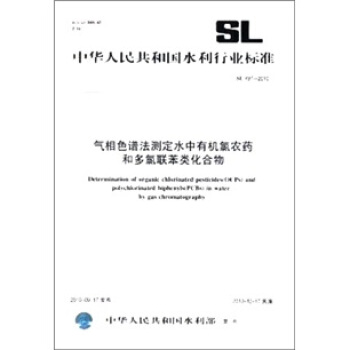

具体描述
内容简介
《英语学习型词典典型词例的选取》主要探讨以下问题:①哪些因素影响英语学习型词典词例的选取?②这些因素如何影响典型词例的选取和呈现?③词典编纂者应当采取哪些策略确保选例的典型性?在词例作为语篇的研究框架中,可确定至少有五个因素影响选例,即用例的意图、词例的语言信息量、词例的源语篇、词例所适配的词典语篇以及特定词典用户对词例的需求。因此,典型词例的选取须满足意图性、信息性、衔接性和可接受性等要求。
典型词例总是蕴含编纂意图。选例能否传达明确的意图,很大程度上取决于词典编纂者是否正确预测用户在何种情况下可能查询目标词,是否意识到解码意图的词例与编码目的的词例起着不同的作用。
就词例的信息性而言,词典编纂者须考虑语料库检索工具在词例选取中的运用以及相关的语言学理论对词例选取的启示。一些实用的检索工具,如WordSmith,World Sketch Engine和FrameNet等,可直接用于提取信息量大的词例。而信息丰富的词例通常显示目标词的语义、搭配和(或)句法信息。框架语义学阐明了词汇单位的典型框架以及框架成分,对于如何选取语义信息凸现的典型词例起着指导作用。相关的短语搭配研究则有助于选取搭配信息充分的词例。配价理论和句法转换理论中的一些规则对于词例的选择起着句法制约作用。
词例与源语篇之间的衔接问题主要是指示语的处理问题。据调查,人称指示语通常在词例中保留。具有口语语篇标记的方位指示语here和there很少出现在词例中。词例的时态(即时间指示语)通常限于一般现在时和一般过去时;其他类型的时态除非受动词语义的影响很少出现在词例中。
有关词例与词典语篇的衔接,编纂者须考虑词典语篇中的其他因素,包括词频、词性、词义以及词的标记性,对词例选取的影响。英语学习型词典一般例释无标记的高频词的用法。但为了满足一些用户的特殊查询需求,具有语体或感情色彩标记的词有时也配例。一个无标记的词通常每一义项配有两个以上的例子,而一个有标记的词通常每两个义项配有_例。至于词性的配例,动词、介词和形容词应首先考虑。
词例的接受性问题可用关联理论解释。一个最佳的例子是特定词典用户花最小的努力获得最大的语言信息。这就要求词典编纂者利用问卷调查的方法以及基于学习者语料库和平行语料库检索,考查特定用户的显性和隐性的词例查询需求。同时,词典编纂者应适当采用一些方式,如短语例与句例相结合、黑体、括注、警示例以及对词例中的不常用词、复杂结构、文化信息的控制等,有效呈现词例。
《英语学习型词典典型词例的选取》最后提出了一个英语学习型词典典型词例的选取与呈现的模式。
目录
序Acknowledgements
Abstract
摘要
Abbreviations
Chapter One Introduction
1.1 Rationale for the Present Research
1.2 Overview of Exemplification Research
1.3 Research Objectives
1.4 Research Methodology
1.5 Research Framework
1.6 Outline of the Book
Chapter Two Intentionality of Illustrative Examples
2.1 Evidence for the Functions of Illustrative Examples
2.1.1 Psycholmguistic Evidence
2.1.2 Empirical Evidence
2.2 Nature of Illustrative Examples
2.2.1 Infinite Utterances vs. Prototypical Examples
2.2.2 Syntagmatic Relationship vs. Paradigmatic Relationship
2.3 Classification of Examples Functions
2.3.1 Descriptive Approach
2.3.2 User-oriented Approach
2.3.3 A Refined Classification of Examples Functions
2.3.4 A Case Study of the Exemplification of the Word monopoly
2.3.5 Discussion
2.4 Evincing lexicographic Intentions in Illustrative Examples
2.5 Summary
Chapter Three Informativity of Illustrative Examples
3.1 Impacts of Technological Innovations on the Choice of Dictionary Examples
3.1.1 Manual Collection of Data
3.1.2 Computer Corpus and KWIC Concordancing
3.1.3 Word Sketch Engine
3.1.4 FrameNet Concordancing
3.1.5 Summary of the Technological Advances
3.2 Semantic Information in Illustrative Examples
3.2.1 Overview of Frame Semantics
3.2.2 Implications of Frame Semantics for Lexicography
3.2.3 Application of Frame Semantics to Exemplification: A Case Study of the Lemma conclude
3.2.4 Procedures for Selecting Informative Examples from Corpus
3.3 Combinatory Information in Illustrative Examples
3.3.1 Significance of Word Combinatory Information in Linguistics and in Lexicography
3.3.2 Classification of Word Combinations: An Overview
3.3.3 Approaches to Phraseological Study
3.3.4 Method
3.3.5 Results
3.3.6 Discussion
3.3.7 Principles of Exemplifying Collocations
3.4 Syntactic Information in Illustrative Examples
3.4.1 Overview of Lexicogrammars
3.4.2 Treatment of Syntactic Information in Illustrative Examples in the "Big Five
3.5 Summary
Chapter Four Cohesion Between the Illustrative Example and the Source Text
4.1 Introduction
4.2 Relevant Studies
4:2.1 Theoretical Underpinnings
4.2.2 Critique of Relevant Research
4.3 Method
4.4 Results
4.4.1 Number of Example Sentences in the Sample Data
4.4.2 Person Deictic Expressions in Example Sentences
4.4.3 Place Deictic Expressions in Example Sentences
4.4.4 Time Deictic Expressions in Example Sentences 2
4.5 Discussion
4.5.1 Person Deictics from a Perspective of Information Structure Theory
4.5.2 here and there: Markers of Simultaneous Spoken Discourse
4.5.3 Conditions for Using Minor Types of Verb Tenses
4.6 Summary
Chapter Five Cohesion Between the Illustrative Example and the Dictionary Text
5.1 Relevant Studies
5.2 Method
5.3 Results
5.3.1 Effects of Word Frequency, Part-of-Speech and Lexical Meaning on Exemplification
5.3.2 Factors Affecting Exemplification of Regionalisms
5.3.3 Effects of a Words Subject Field on Exemplification
5.3.4 Effects of a Words Currency on Exemplification
5.3.5 Effects of a Words Style on Exemplification
5.3.6 Effects of a Words Attitude on Exemplification
5.3.7 Summary of the Results
5.4 Discussion
5.5 Summary
Chapter Six Acceptability of Illustrative Examples to EFL Learners
6.1 Relevant Studies
6.1.1 Users Needs for Examples
6.1.2 Effectiveness of Different Types of Examples in Language Learning Tasks
6.1.3 Effects of the Users Proficiency Level and the Background Knowledge on the Selection of Examples
6.1.4 Summary of Previous Studies
6.2 Method
6.3 Results
6.3.1 Results of the Questionnaire Survey
6.3.2 Results of the CLEC Concordances of the Erroneous Structure although...but..
6.4 Discussion: Theorizing the Findings with Relevance Theory
6.4.1 Overview of Relevance Theory
6.4.2 Interpreting with Relevance Theory the Criterion of Acceptability for Illustrative Examples
6.5 Summary
Chapter Seven Conclusions
7.1 Main Findings
7.2 Implications
7.2.1 Implications for the Practice of Dictionary Exemplification
7.2.2 Implications for the Development of Metalexicographical Theory
7.3 Limitations of the
7.4 Concluding Remarks
References
Appendix
Appendix 1
Appendix 2
Appendix 3
Appendix 4
Appendix 5
精彩书摘
2.2 Nature of Illustrative ExamplesWith the conviction that exemplification is an effective device, lexicographers have to consider another important issue: what is the nature of an illustrative example? The issue will be approached from modem linguistics perspective.
2.2.1 Infinite Utterances vs. Prototypical Examples
Infinite utterances are possibly produced with a small number of linguistic rules. Hence, a word in question is likely to occur in an unlimited number of utterances. Even in a medium-sized computer corpus, a target word is often shown in many instances of usage. Yet, not every instance of word usage in a corpus is suitable for a diction- ary example. Of the numerous examples of usage, some illustrate the typical usage of a target word, and some are just untypical instances of usage.
Consider the following sentences:
(1) The dog is in the yard.
(2) The dog is barking in the yard.
Both sentences are appropriate in some situations, but in exemplifying the entry word dog in a dictionary intended for elementary learners, we may choose the second sentence as an example and drop the first one.
前言/序言
徐海博士带来书稿的清样索序,让我分享他的一份喜悦。随同书稿,他还给我捎来一篇文章。起初我没看清楚是什么内容。他走后,我瞅了一眼:原来是一篇将书稿部分内容加以拓展和深化而形成的论文,已为《国际词典学杂志》(International Journal of Lxicography)所采用。在此之前,徐海博士已经在《国际词典学杂志》上发表过论文,也是从本书稿中抽出的其中一些精华的章节。换言之,徐博士在本书中所体现的研究成果是为国际词典学界的同行所认可的。现在他在国内推出了全书,是件可喜可贺的事,我想读者乃至词典学界的人士都会从中受益的。近20年来,词典学的专著,一部接一部出版,从通论到专论,从宏观研究至微观研究,功夫愈做愈细,问题的探讨也越来越深入,而视野则越来越开阔。徐博士这本《英语学习型词典典型词例的选取》就是个好例子。他探索的是一个范围有限的问题,但却综合了现代词典学、语言学、语料库语言学等成果,进行了多角度、全方位的研究。在这个问题上,采取较全面、较大规模的定量分析的,他是第一人,一反过去某些人只满足于主观推论或经验铺陈的做法。他的研究结论牢牢地建立在他所获得的数据的基础之上。因此,本书在提高英语学习型词典词例选取的质量方面、具有理论上的启发意义和实践上的指导意义,应该是无可置疑的。
我国词典学的发展出现了一个可喜的现象,开始和世界的同行接轨:在国际学术团体任职者有之,在国际会议上作主题发言人的有之,在国外的著名出版社或权威刊物出书、发文者有之。也就是说,我国的学者已经能够和世界的词典学家站在一个平台上说话。徐海博士就是这样一名能与国际学界对话的年轻学者。他这本著作用英文出版,不消说,将获得交流之便。但有点可惜的是,本书主要在国内发行,不谙英文的读者,也就无缘了解本书的内容以及其中所应用的理论和方法。但愿徐博士不久将来还有机会推出同类的中文著作,惠及我国广大读者和辞书工作者。
用户评价
从文学欣赏的角度来看,这本书的语言风格属于那种“克制而有力”的类型。它很少使用华丽的辞藻,但每一个词汇的选择都恰如其分,精准地传达了作者想要表达的意图,仿佛是经过反复锤炼的矿石,去除了所有杂质,只留下最核心的价值。我个人非常推崇这种返璞归真的表达方式,因为它迫使读者放下对花哨文字的依赖,转而将注意力完全集中于思想内容的本身。在阅读那些较为复杂的论述时,我发现自己能非常顺畅地跟上作者的思路,这很大程度上归功于其清晰的逻辑结构和简洁有力的句子。有时候,读到一些关键性的论断时,甚至会有一种豁然开朗的感觉,仿佛作者已经替我们完成了最艰巨的思考工作,而我们只需要跟随他的指引,便能抵达真知。这种高效的心智交流体验,是阅读体验中最为宝贵的财富之一。
评分收到您的请求。我将以一位读者的身份,为您撰写五段风格和内容各异的图书评价,每段约300字,不提及原书内容,并避免使用AI写作的痕迹。 --- 这本书的装帧设计着实让人眼前一亮,那种沉稳中带着一丝复古的质感,在如今充斥着轻薄快餐式阅读的时代里,显得尤为珍贵。我是在一个偶然的机会下,在一家老式书店的角落里发现它的,当时只是被它厚重的分量和别致的封面吸引。初次翻阅时,那种纸张与指尖接触的沙沙声,以及油墨散发出的独特气息,瞬间将我带入了一种专注而沉静的学习氛围中。它似乎不仅仅是一本工具书,更像是一件需要被郑重对待的知识载体。我特别欣赏它在排版上所展现出的匠心,无论是字体大小的选取,还是行间距的处理,都透露出一种对阅读舒适度的极致追求。这种对细节的把控,使得即便是长时间的翻阅,眼睛也不会感到过度的疲劳,这对于任何需要深度钻研的读者来说,都是一个巨大的加分项。说实话,我很少在如此专注于“实体”感受的书籍中找到共鸣,但这本书做到了,它成功地营造了一种仪式感,让每一次打开它都像是一次郑重的开始。
评分坦白讲,我购买这本书的初衷纯粹是出于一种学术上的好奇心,想看看当前研究领域的一些前沿思考是如何被系统化、结构化地呈现出来的。我对它所涉及的理论框架非常感兴趣,尤其是作者在构建其论证体系时所采用的逻辑推演过程。阅读过程中,我发现作者的叙述风格极其严谨,很少有冗余的修饰性语言,每一个段落似乎都紧密围绕核心论点展开,这种高效的信息传递方式,极大地节省了我的时间。我尤其欣赏其中关于“概念界定”的部分,它没有停留在表面的定义,而是深入挖掘了不同流派在核心术语理解上的细微差异,这种对比分析清晰有力,为后续的深入理解铺平了道路。对于希望构建稳固理论基础的读者而言,这本书无疑提供了一个扎实的基石。它的深度和广度兼备,既有宏观的理论概览,又不乏对具体案例的微观剖析,让人感到作者的思考是多维度且立体的。
评分这本书的出版质量和信息的新旧程度,对于一个关注时代发展的人来说至关重要。我查阅了相关的出版信息,发现它是在一个非常及时的节点完成的,它似乎捕捉到了某一领域正在发生关键性转折的脉搏。在快速迭代的知识环境中,一本信息滞后的书籍很快就会失去参考价值。然而,这本书的内容展现出一种超越短期热点的洞察力,它探讨的底层逻辑和基本原理似乎具有更持久的生命力。我特别喜欢其中对某些历史发展脉络的回溯,这使得我们能够跳出当下的喧嚣,从更宏观的历史视角来审视当前的问题,从而避免陷入“只见树木不见森林”的窘境。总而言之,它不仅提供了解决当下问题的方案,更重要的是,它教会了我们如何去思考未来可能出现的问题,这是一种赋能,而不是简单的知识灌输。
评分我必须承认,我并不是一个天生的理论研究者,更多时候我是一个实践派,关注的是“如何在实际操作中应用”。因此,我更倾向于寻找那些能够提供具体操作指南和可借鉴经验的书籍。这本书在这一点上给了我极大的惊喜。它的章节组织方式非常贴合实际工作流程,像是一个循序渐进的指导手册,而不是一本高高在上的学术专著。我特别关注了其中关于“流程优化”和“效果评估”的那几部分内容,里面的图表和流程图设计得非常直观易懂,即便是初次接触相关领域的人,也能迅速捕捉到关键步骤。我尝试着将书中的某些建议应用到我最近的一个项目中,结果发现效率确实有所提升,而且在执行过程中遇到的阻力也明显减小了。这种理论与实践的无缝衔接,是许多同类书籍所欠缺的。它真正体现了“知行合一”,让知识不再是书架上的摆设,而是可以立即投入使用的工具。
相关图书
本站所有内容均为互联网搜索引擎提供的公开搜索信息,本站不存储任何数据与内容,任何内容与数据均与本站无关,如有需要请联系相关搜索引擎包括但不限于百度,google,bing,sogou 等
© 2025 book.cndgn.com All Rights Reserved. 新城书站 版权所有




















